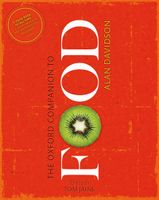Label
All
0
Clear all filters
Milk Pasteurization and Preservation
Appears in
Published 2014
Virtually all the milk on sale in western countries has been pasteurized to kill most of the bacteria naturally present in it and to make it keep longer. The least rigorous method of pasteurization uses a temperature below boiling point, and also below the critical temperature of 74 °C (165 °F) at which the compactly coiled molecules of the lactoglobulin proteins in the milk are irreversibly opened out, altering the flavour of the milk and giving it a ‘cooked’ taste. The milk may be heated to 63–6 °C (145–50 °F) for 30 minutes or, in a more modern process which, it is claimed, makes less difference to the flavour, to 72 °C (161 °F) for 15 seconds, followed by rapid cooling. HTST (‘high temperature, short time’) pasteurization of milk is done as the milk flows along a narrow pipe through a heat exchanger, so that heating and cooling can be very rapid indeed. ‘Longlife’ or UHT (ultra high temperature) is heated for only 1–2 seconds to as much as 138 °C (280 °F).
Part of
Advertisement
Related Recipes
-
-
-
-
Related Reference
-
-
-
-
Advertisement
The licensor does not allow printing of this title



